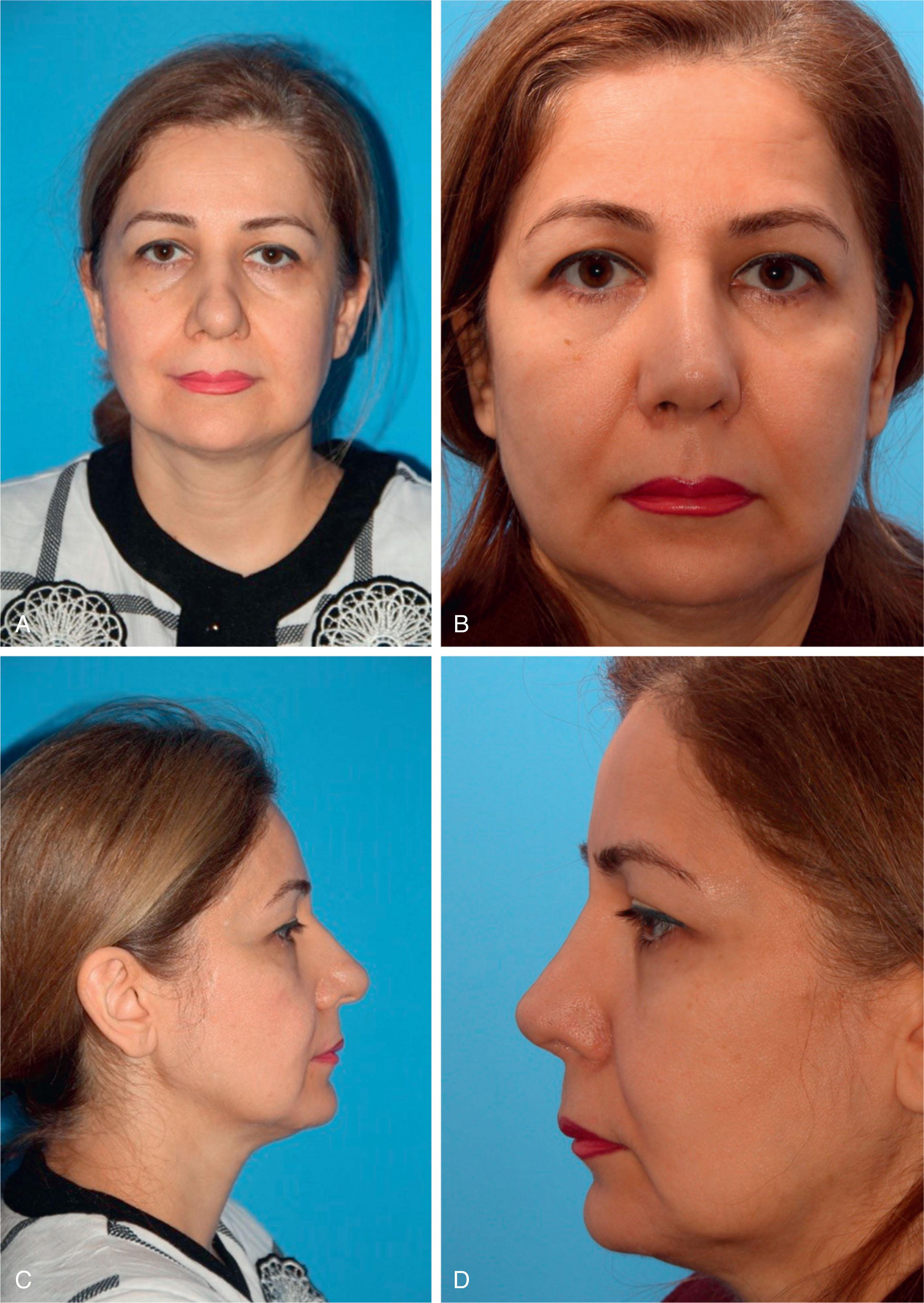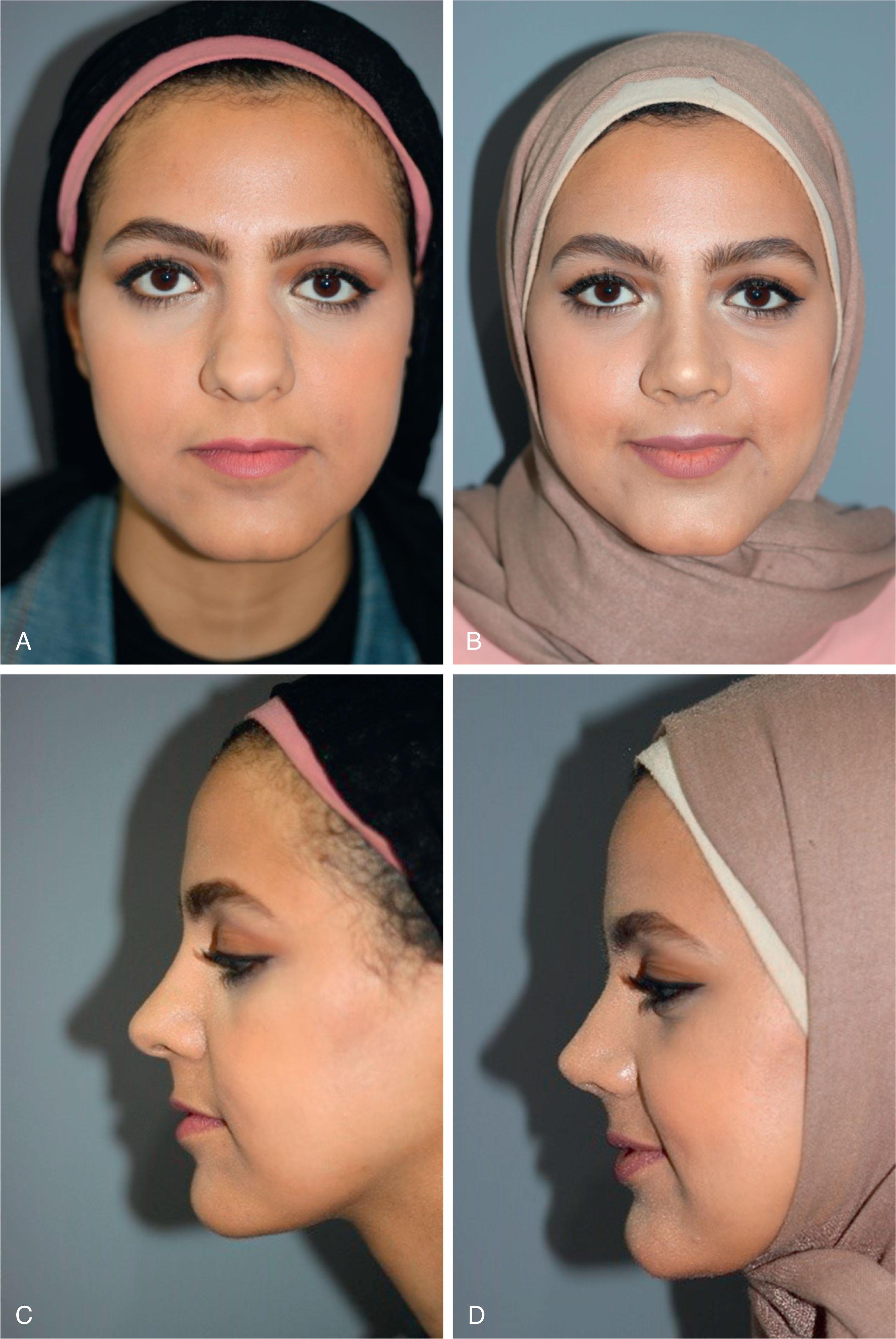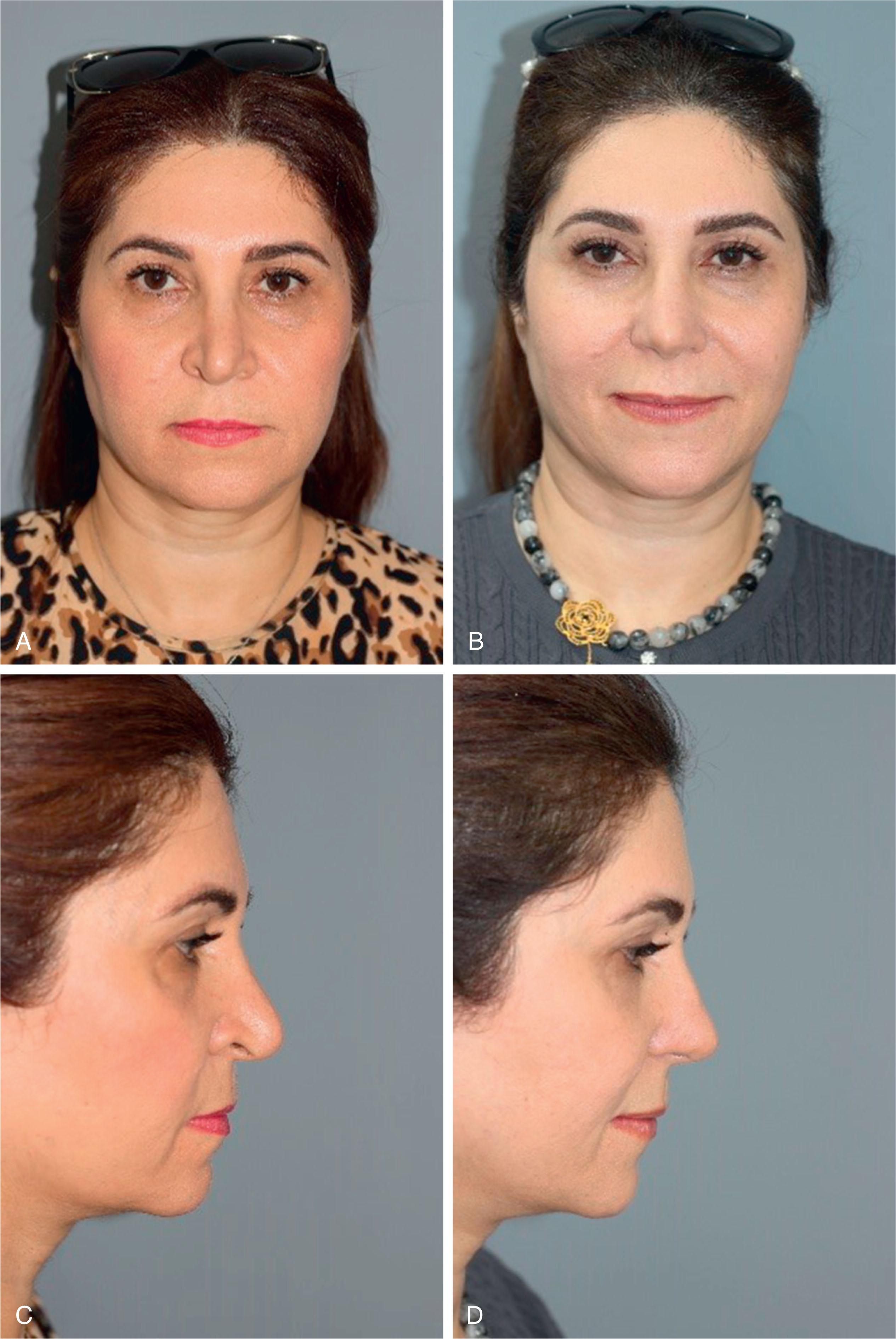Physical Address
304 North Cardinal St.
Dorchester Center, MA 02124
Alar pinch deformity (APD) is the concave deformity of the tip area or nose alar that makes a change in the shape of the tip or causes buckling in on one or both sides. It may occur with or without breathing dysfunction. The first step for analysis of APD is the past history of the patient that includes any accidents or trauma to the nose, previous nose surgery or manipulation, or nose infection.
Sometimes the shape and size of the lower lateral cartilage (LLC) is the main cause of APD. For example, in a patient with parenthesis tip shape ( Fig. 77.1 ). At the tip, malposition of the LLC where its direction is toward the medical canthus rather than the lateral canthus, makes a bulbous tip and APD ( Fig. 77.2 ). A drop nose and crooked nose are also causes of the primary APD. Any trauma to the LLC, skin injury, or any hematoma in the soft tissues may cause contraction and sometimes result in APD in the long term.


In reduction rhinoplasty with overresection of the cartilaginous framework ( Fig. 77.3 ), or any hashing of the LLC or Dom cut technique that results in scar tissue, may cause pressure in the long term. This can result in APD and a buckling tip shape, and sometimes causes collapse of lateral wall or alar rim retraction and ala-columellar disharmony ( Table 77.1 ).

| Effect of Technique | Reversed LLC | Onlay Graft | Alar Batten Graft | Lateral Crus Strut Graft | Lateral Crus Cartilage Interposition | Anchor Graft |
|---|---|---|---|---|---|---|
| Aesthetics | + | + | + | + | + | + |
| Function | − | − | +− | + | + | + |
External nasal value collapse can develop, resulting in increased nasal airway resistance because the orientation and configuration of the lateral crus cartilage is important for the nasal valve airway.
One of the problems in correcting APD is the duration of time that the patient has the deformity. When APD is present for a long time, the soft tissues shorten and become abnormal, making correction of APD more complicated and difficult. Following APD surgery, the cartilage also has a tendency to revert to its previous concave shape.
Become a Clinical Tree membership for Full access and enjoy Unlimited articles
If you are a member. Log in here